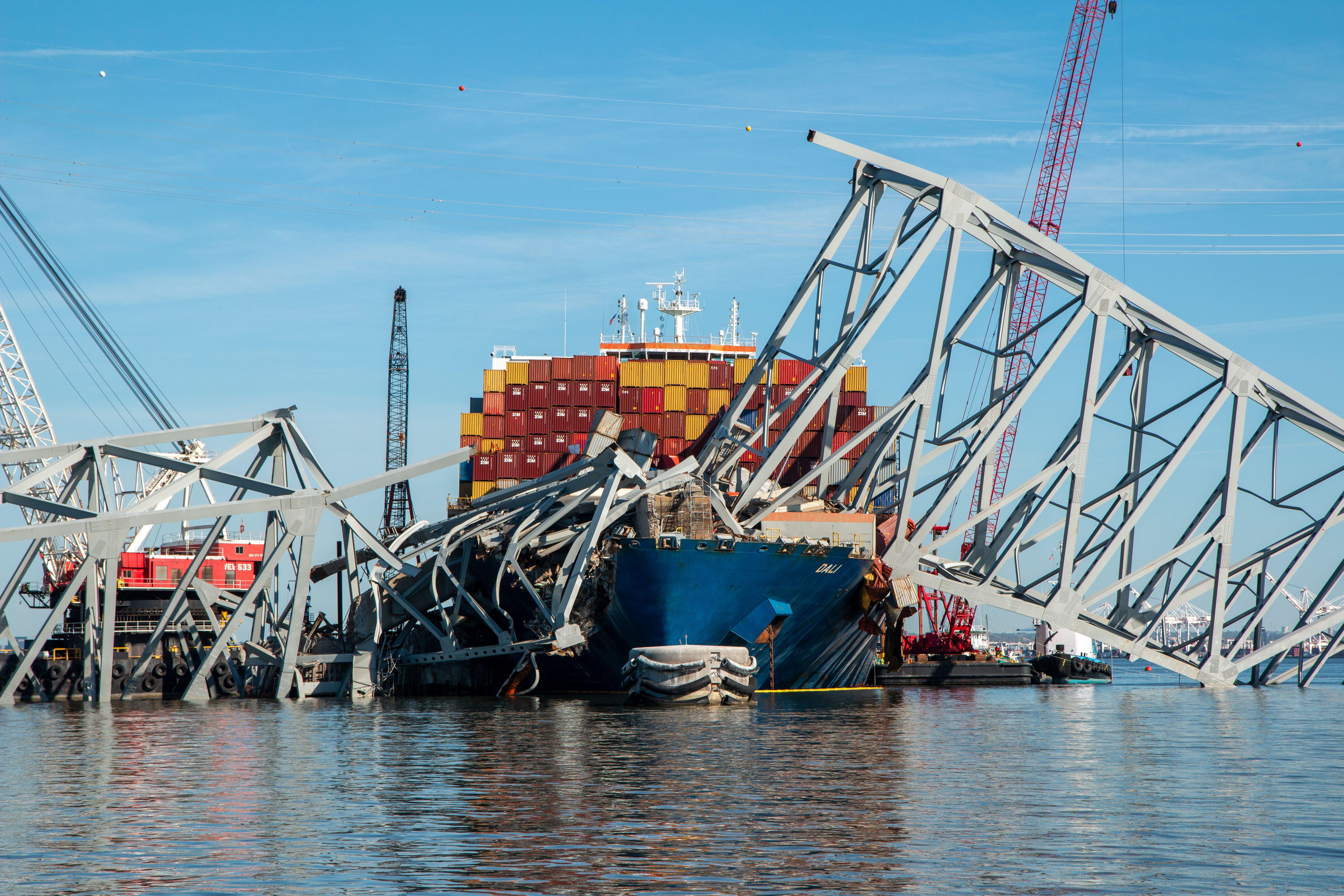Twelve months after the container ship Dali collided with a support pier of the Francis Scott Key Bridge, causing the 1.6-mile span to collapse, port operations and the industrial real estate market have rebounded to near-normal levels, with local commercial real estate brokerage professionals indicating the event has little to no impact on current activity.
 The March 2024 catastrophe shut down the majority of operations at the Port of Baltimore for nearly three months, impacted more than 8,000 jobs, and produced economic losses exceeding $15 million per day. The collapse sent a domino-like ripple effect throughout the Baltimore-area business and real estate communities, given the Port of Baltimore’s ranking among the top 20 ports nationally for tonnage and top 10 for dry bulk.
The March 2024 catastrophe shut down the majority of operations at the Port of Baltimore for nearly three months, impacted more than 8,000 jobs, and produced economic losses exceeding $15 million per day. The collapse sent a domino-like ripple effect throughout the Baltimore-area business and real estate communities, given the Port of Baltimore’s ranking among the top 20 ports nationally for tonnage and top 10 for dry bulk.
Although traffic patterns on land will not return to normal until the bridge replacement is completed more than three years from now, several commercial real estate brokers specializing in the warehouse/industrial asset class believe Greater Baltimore has remained resilient following the tragic event.
CBRE Senior Vice President Matt Laraway said he received “a tremendous number of calls from worried end-users looking for space locally, investors, and financial institutions when the collapse first occurred, but everything subsided quickly.”
But Laraway believes the local industrial market normalized several weeks after the channel re-opened, which led to “fairly healthy balance of the year.”
The more pressing concerns were the outcome of the 2024 Presidential election and the uncertainty imposed by the threat of tariffs, he said.
“Leasing and sales activity did not approach figures during COVID, activity remains steady currently, but we are starting to see some occupiers hesitate as final decisions are made on tariffs,” he said. “Certain government contractors are also playing a wait-and-see game with growth plans pending the funding of programs by the federal government. Few companies were making decisions at the end of last year, but they have started to now, although cautiously.”
On the bright side, greater Baltimore has seen 37 sales transactions over the last six months, covering 2.1 million square feet and representing $252 million in volume at an average price of nearly $139 per square foot, according to MacKenzie Commercial Real Estate Services.
Bulk and value price-per-pound leases continue in Baltimore County East and Harford County. For example, Bob’s Discount Furniture renewed in Aberdeen for 672,000 square feet of space, SH Bell leased 450,000 square feet, and the new 400,000-square-foot University of Maryland Medical System facility is scheduled to open in the 2nd quarter of 2025.
In addition, the University of Maryland Medical System (UMMS) signed a lease and broke ground on a 400,000 square-foot Logistics Operations Center at the Tradepoint Atlantic complex in the Sparrows Point area of Baltimore County.
Despite a nearly one-third reduction of cargo volume, the Port of Baltimore recorded its second-best year ever in 2024, according to the 2025 Ports Report. It handled nearly 46 million tons of cargo. The Port of Baltimore is considered the #1 RoRo (roll on/roll off) destination in the country due to its closer proximity (compared to other east coast ports) to the mid-west, highway connections and heavy rail component.